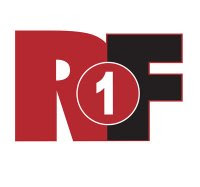Monday, October 5, 2015
HPAI (Bird Flu) in the USA - 2015
Highly Pathogenic Avian Influenza - 2015
Since it was first identified in the United States in December 2014 in the Pacific Northwest, highly pathogenic avian influenza (HPAI) has been detected in commercial and backyard poultry flocks, wild birds, or captive wild birds in 21 States. With the last case of the spring outbreak identified in June, 2015, a total of 211 commercial and 21 backyard poultry premises had been affected. This resulted in the depopulation of 7.5 million turkeys and 42.1 million egg-layer and pullet chickens, with devastating effects on these businesses, and a cost to Federal taxpayers of over $950 million.
Genetic analysis has shown that a comingling of migratory birds between northeast Asia and Alaska allowed for re-assortment of Asian HPAI strains with North American low pathogenic avian influenza (LPAI) viruses. The resulting Eurasian-American (EA/AM) HPAI viruses that infected wild birds and domestic poultry earlier in 2015 serve as a potential threat to poultry this fall and winter. Wild birds, particularly resident and migratory dabbling ducks, appear to be the reservoir for these viruses.
To prepare for additional outbreaks that could occur this fall or later, USDA planning activities assumed a worst-case scenario beginning in September 2015, with HPAI occurring simultaneously in multiple sectors of the poultry industry throughout the nation. Under this scenario, 500 or more commercial establishments of various sizes across a large geographical area could be affected.
The USDA plan for preventing and responding to future HPAI cases, in collaboration with industry and State partners, includes:
Promoting improved on-farm biosecurity practices in order to prevent future HPAI cases to the greatest extent possible;
Improving HPAI surveillance in wild birds as a means to provide “early warning” risk information to States and industry;
Expanding Federal, State and industry response capabilities, including availability of personnel, equipment, and depopulation, disposal and recovery options;
Improving our capabilities to rapidly detect HPAI in domestic poultry and to depopulate affected flocks within 24 hours to reduce the environmental load of HPAI viruses and their subsequent spread;
Streamlining the processes for payment of indemnity and the cost of eliminating viruses so that producers receive a fair amount quickly, to assist them in returning to production;
Enhancing our ability to communicate in a timely and effective way with producers, consumers, legislators, media, and others regarding outbreaks and other information; and
Making preparations to identify and deploy effective AI vaccines should they be a cost beneficial addition to the eradication efforts in a future HPAI outbreak.
A document was published in August 2015 entitled: USDA APHIS HPAI Response Plan: The Red Book (Draft August 2015) which reflects the knowledge and lessons learned during the spring 2015 outbreak event.
Importantly, while HPAI is zoonotic, and while it appears to have a relatively high species-specific transmission barrier, it also can be fatal for humans. Animal health officials should and do coordinate with public health officials in the event that HPAI is identified in the United States; appropriate health and safety measures should always be observed when conducting HPAI response activities.
Bottom line is, there is a high probability that the HPAI is coming back, this fall. The time to consider preventative and mitigation activities is NOW.
Subscribe to:
Post Comments (Atom)

No comments:
Post a Comment